#west indian heritage
Explore tagged Tumblr posts
Text
Vintage Jamaica West Indian Snake Eyes Sterling Silver Bangle Bracelet by Carib-Craft Sterling

Such a wonderful and traditional, thin solid sterling silver, snake eyes, West Indian bangle bracelet! This beautiful Jamaican bracelet (also called a “Bayra”) has a uniquely engraved, 1 5/8-inch pattern design on each side of the solid silver and has two dotted pointy ends on the tips.

The beauty of Bayras is that it is pliable and can open and close to securely surround almost every wrist. West Indian Bangle Bracelets are a culturally significant tradition of the Caribbean Islands in order to pass on the West African and East Indian heritage, and to symbolize union, love and strength.
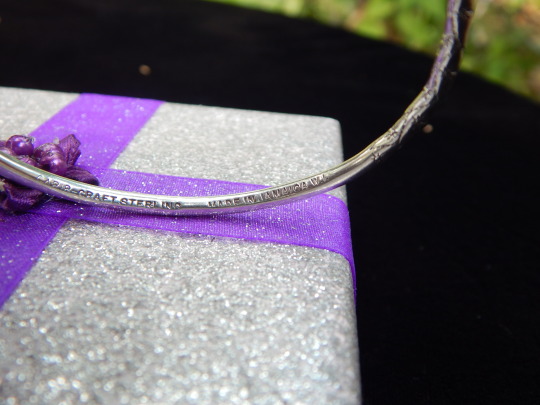
West Indian jewelers have been creating such high quality, handcrafted, timeless works of art throughout the Caribbean, utilizing the same jewelry crafting methods islanders have been using for centuries and it is demonstrably evident in this magnificent bracelet. This beautiful bracelet is a terrific keepsake of Caribbean culture and heritage and helps keep the Caribbean spirit alive wherever you are!
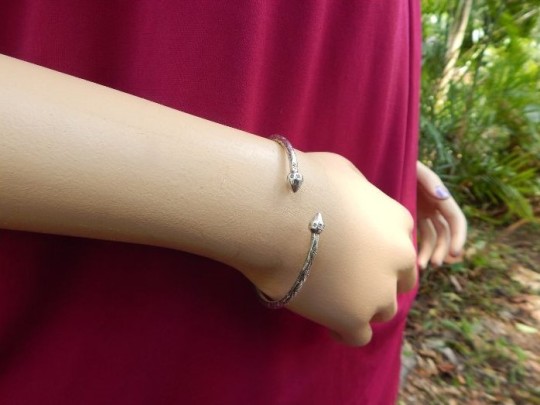
#west indian#west indian bangle#west indian bracelet#jamaica#jamaican bangle#jamaican bracelet#bangle bracelet#bayra#west indian bayra#carib craft#jamaican jewelry#caribbean#caribbean culture#caribbean heritage#caribbean jewelry#west indian jewelry#west indian heritage#west indian culture#etsy#vintage bracelet
2 notes
·
View notes
Text
Happy AAPI Month to the AAPI Characters of HSS! The canon characters, plus my Prime MC Jordan and OG MC Evie!
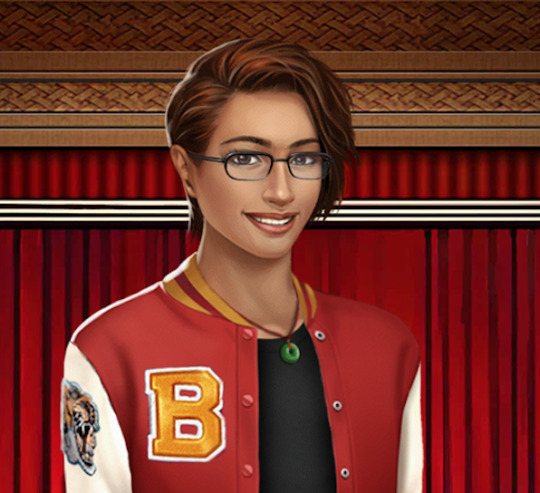



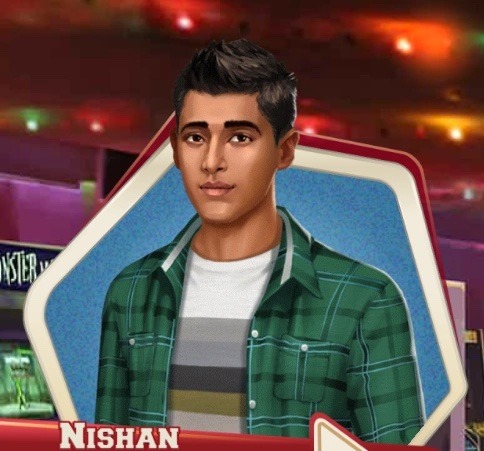







#In case anyone is confused about some of these characters:#In my headcanons Jordan is Blasian (half Indian half Black)#Evie is of course South Asian with some White and maybe Turkish heritage#i will admit there is a lot about Evie's heritage that I'm still working on but she's definitely Indian on her mom's side#Koh's sprite file is titled as Southeast Asian#Jade's sprite file is titled as Middleeastern which i believe counts as Asian (West Asian to be exact)#and I think that's about it#hss#high school story#choices hss#choices high school story#aiden zhou#choices hss:ca#hss: class act#hss:ca#evie ayana (og hss mc)#jordan price (hss prime mc)#koh sunya#hss prime#nishan khandaar#myra khandaar#sakura watanabe#sydney kym#frank walter#jade ali#kieran hale#ajay bhandari#hss class act#choices high school story: class act#high school story class act
12 notes
·
View notes
Text
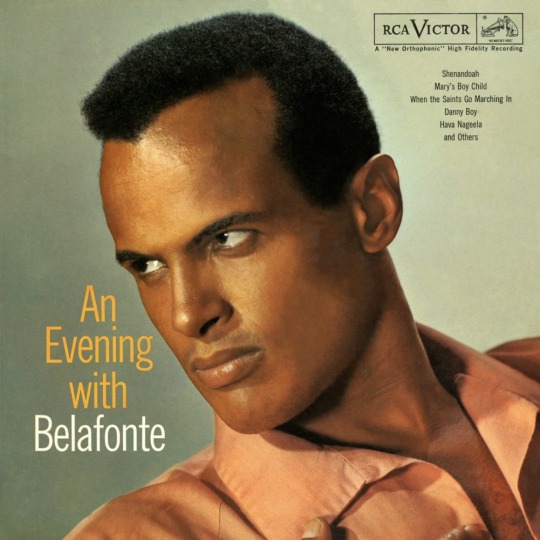
LP cover of Harry Belafonte’s album “An Evening with Belafonte” (1957).
The album featured his version of the Hebrew song “Hava Nageela”.
Its popularity led to Belafonte once referring to himself as “the most popular Jew to America”.
His version of the song is believed to be the most popular, with Belafonte claiming “most Jews in America learned that song from me”. It became a staple at Jewish celebrations, especially weddings.
Belafonte was of Sephardic Jewish, Afro-Jamaican, Dutch, and Scottish descent. Although he was raised Catholic, he honored his Jewish heritage throughout his career, between singing this song at nearly every one of his concerts, and playing the Jewish angel Alexander in the film “The Angel Levine” (1970).
#harry belafonte#music#jewish#jewish culture#jewish heritage#jewish history#jewish music#hebrew#Black Jews#Black culture#Black history#Jamaican Jews#Scottish Jews#Dutch Jews#Caribbean Jews#West Indian Jews#hava nagila#Hava Nageela#pop culture#jewish pop culture
49 notes
·
View notes
Text
I completed my degree. Finished with second class honours and an A in my thesis. Holy fuck its done.
Thank you to all the poets and artists here that I contacted and reblogged countless pieces of art from. Y'all helped my lit review and poetry writing in ways that I can't even articulate properly.
#college graduate#lits in english major#poet#caribbean#west indian#being consumed by a spirit of gaining knowledge of the bible and my own cultural heritage paid off fr
2 notes
·
View notes
Text

A living breathing Heritage.
1 note
·
View note
Text
Discover heritage destinations in West India. Plan your next cultural adventure with India Heritage Travel for a memorable experience.
https://indiaheritagetravel.com/destinations-india/west-india/destinations-west-india-rajasthan/
Realted Tags : - West India heritage destinations, cultural tours West India, Gujarat heritage tours, Rajasthan Heritage Tours, Trip places in india, Best heritage tours India, UNESCO heritage sites in India,
#West India heritage destinations#cultural tours West India#Gujarat heritage tours#Rajasthan Heritage Tours#Trip places in india#Best heritage tours India#UNESCO heritage sites in India#india heritage travel tour#india heritage travel#Indian cultural festivals#Discover Central India
0 notes
Text

The Obeah Man (1964) by Ismith Khan The second novel of Trinidadian author Ismith Khan, The Obeah Man follows Zampi, an Obeah man living in Blue Basin near Diego Martin, who is in search of his lover Zolda, who resides in La Basse, a community by a landfill in Port of Spain. Set over three days from Carnival Monday to Ash Wednesday, it is the only West Indian novel centered on an Obeah man.
A Quality of Violence (1959) by Andrew Salkey Written by Jamaican novelist and poet Andrew Salkey, A Quality of Violence is set in 1900 in St. Thomas-in-the-East, Jamaica, as tensions rise during one of the worst droughts in parish’s history. The drought leads to violence, impacting those like the Marshalls, a young couple with a five-year-old daughter; the childless Parkins, and Obeah man Dada Johnson and his wife. The lives of those in the parish are shaped by two opposing forces: Christianity and Pocomania. And, over time, these beliefs clash and start to blur, culminating in a collective madness more devastating than the drought.
Hamel, the Obeah Man by Cynric R. Williams, Edited by Tim Watson & Candance Ward Hamel, the Obeah Man, is set in early 19th century Jamaican and follows a planned slave rebellion on a plantation. Although the novel is sympathetic to white slaveholders and critical of anti-slavery missionaries, it does offer a nuanced view of the island’s culture and the resistance of the enslaved. The titular character, Hamel, is a spiritual leader, whose importance only grows as the novel continues. The Broadview Edition of this novel includes a foreword by Barbadian poet and scholar Kamau Brathwaite, as well as a critical introduction, and extensive appendices that focus on contemporary reviews, writings about Jamaica, and historical documents on slavery and slave uprisings.
#obeah#trini#west indian#west indies#culture#history#anthropology#heritage#politics#social commentary#social issues
1 note
·
View note
Text
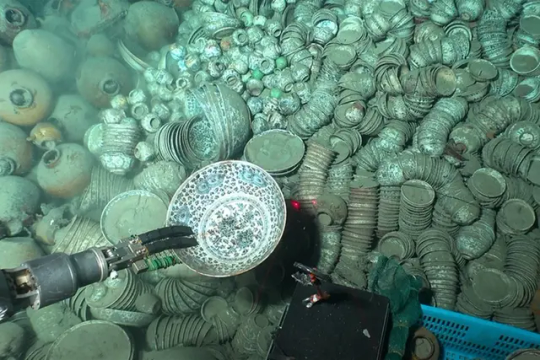
900 Artifacts From Ming Dynasty Shipwrecks Found in South China Sea
The trove of objects—including pottery, porcelain, shells and coins—was found roughly a mile below the surface.
Underwater archaeologists in China have recovered more than 900 artifacts from two merchant vessels that sank to the bottom of the South China Sea during the Ming dynasty.
The ships are located roughly a mile below the surface some 93 miles southeast of the island of Hainan, reports the South China Morning Post’s Kamun Lai. They are situated about 14 miles apart from one another.

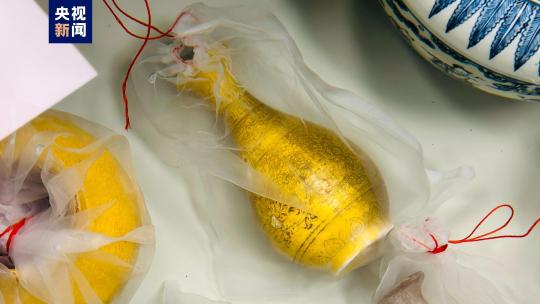
During three phases over the past year, researchers hauled up 890 objects from the first vessel, including copper coins, pottery and porcelain, according to a statement from China’s National Cultural Heritage Administration (NCHA). That’s just a small fraction of the more than 10,000 items found at the site. Archaeologists suspect the vessel was transporting porcelain from Jingdezhen, China, when it sank.
The team recovered 38 items from the second ship, including shells, deer antlers, porcelain, pottery and ebony logs that likely originated from somewhere in the Indian Ocean.
Archaeologists think the ships operated during different parts of the Ming dynasty, which lasted from 1368 to 1644.

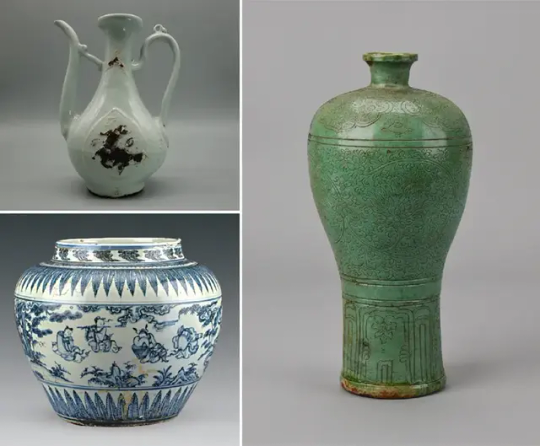

Many of the artifacts came from the Zhengde period of the Ming dynasty, which spanned 1505 to 1521. But others may be older, dating back to the time of Emperor Hongzhi, who reigned from 1487 to 1505, as Chris Oberholtz reported last year.
Archaeologists used manned and unmanned submersibles to collect the artifacts and gather sediment samples from the sea floor. They also documented the wreck sites with high-definition underwater cameras and a 3D laser scanner.
The project was a collaboration between the National Center for Archaeology, the Chinese Academy of Science and a museum in Hainan.
“The discovery provides evidence that Chinese ancestors developed, utilized and traveled to and from the South China Sea, with the two shipwrecks serving as important witnesses to trade and cultural exchanges along the ancient Maritime Silk Road,” says Guan Qiang, deputy head of the NCHA, in the agency’s statement.
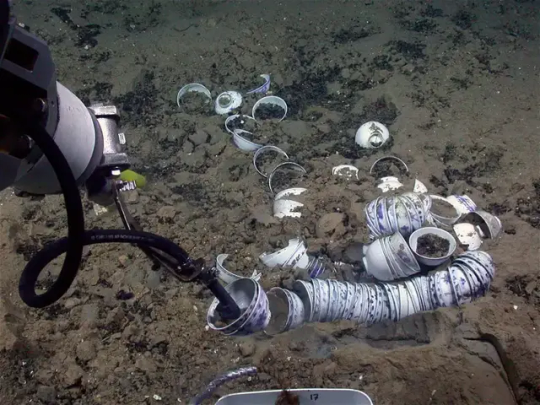
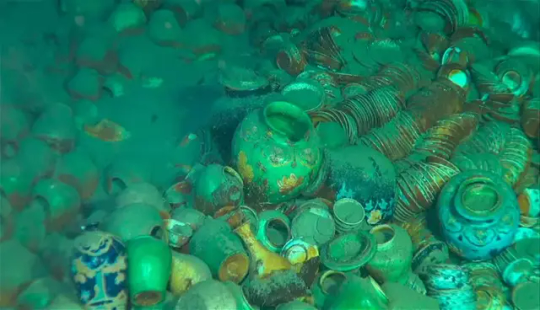
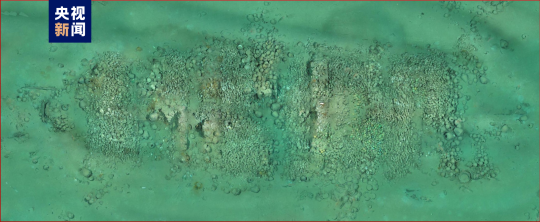
During the Ming dynasty, China’s population doubled, and the country formed vital cultural ties with the West. Ming porcelain, with its classic blue and white color scheme, became an especially popular export. China also exported silk and imported new foods, including peanuts and sweet potatoes.
The period had its own distinctive artistic aesthetic. As the Smithsonian’s National Museum of Asian Art writes, “Palace painters excelled in religious themes, moralizing narrative subjects, auspicious bird-and-flower motifs and large-scale landscape compositions.”
The shipwreck treasures aren’t the only recent discoveries in the South China Sea, according to CBS News’ Stephen Smith. Just last month, officials announced the discovery of a World War II-era American Navy submarine off the Philippine island of Luzon.
By Sarah Kuta.




#900 Artifacts From Ming Dynasty Shipwrecks Found in South China Sea#island of Hainan#Ming dynasty#shipwreck#ancient artifacts#archeology#archeolgst#history#history news#ancient history#ancient culture#ancient civilizations#ancient china#chinese history#chinese art#ancient art
993 notes
·
View notes
Text
Vintage Barbados Bajan Gold-Tone Mid-Century Caribbean Travel Souvenir Keepsake Charm Bracelet with 7 Charms

This absolutely gorgeous, very shiny gold tone 7-charm bracelet represents the traditional heritage and culture of Bajan life.

The fancy double-curb link chain bracelet holds 7 vintage charms: a man riding a donkey cart, limbo dancers, a steel drummer, a man driving an ox cart, a woman carrying a wash tub atop her head – Caribbean style – a policeman, and an island country map of the beautiful country of Barbados.

This wonderful charm bracelet makes a wonderful gift for anyone who appreciates – or misses – the beautiful country and rich heritage of Barbados!
#Barbados#Bajan#Barbadian#Bimshire#Bim#West Indian#Caribbean heritage#Caribbean culture#Bridgetown#charm bracelet#mid century#vintage jewelry#vintage charm bracelet#vintage fashion#Caribbean islands#keepsake#souvenir#travel#etsy
1 note
·
View note
Photo

Borobudur
The Temple of Borobudur or sometimes "Barabudur" is a Mahayana Buddhist temple located close to Muntilan on the island of Java in Indonesia. Built during the rule of the Sailendra Dynasty (c. 650-1025 CE), Borobudur remains the world's largest Buddhist temple. The Buddhists among the Javanese population performed pilgrimages and other rituals at Borobudur until around the 14th and 15th centuries CE when the temple was abandoned as many Javanese converted to Islam. Rediscovered in 1814 CE, Borobudur has since then been the subject of immense research and archaeological investigations by the Dutch and Javanese. UNESCO designated Borobudur as a World Heritage Site in 1991 CE following a restoration in the 1970s and 1980s CE overseen by President Suharto (1967-1998 CE) and UNESCO, and the iconic temple continues to play a powerful role in shaping Indonesian aesthetics, architecture, and cultural identity. Borobudur is the most visited tourist site in Indonesia.
Geography & History
Borobudur is located about 40 km (25 miles) to the northwest of Yogyakarta and some 86 km (53 miles) west of the city of Surakarta in central Java. The temple lies in an area between two volcanoes - Mt. Sundoro-Sumbing and Mt. Merbabu-Merapi - as well as two rivers - Progo and Elo. Borobudur is situated very close to two other Buddhist temples in the Kedu Plain: Pawon and Mendut. Scholars and archaeologists surmise that some sort of relationship must have existed between the temples as all three are positioned along a straight line. However, what this signifies is still a matter of scholarly debate. What is known is that the ancient and medieval Javanese, whether Hindu or Buddhist, associated the Kedu Plain with tremendous agricultural production, and it was thus considered one of the most sacred places on the island of Java. Ancient peoples regarded the two rivers as especially auspicious as they evoked the sacred Ganges and Yamuna rivers in what is present-day India. Not surprisingly, given the area's favorability, the Hindu Gunung Wukir temple sanctuary, which dates to c. 732 CE, lies only 10 km (6 miles) west of Borobudur in the Kedu Plain too.
The period in which the Javanese constructed Borobudur is shrouded in legend and mystery. No records pertaining to its construction or purpose exist, and dating the temple is based on artistic comparisons of reliefs and inscriptions found in Indonesia and elsewhere throughout Southeast Asia. Strong cultural and religious influenced arrived in what is now present-day Indonesia from the Indian subcontinent beginning around the 1st century CE. This influence grew rapidly from c. 400 CE onwards. Hindu and Buddhist merchants and traders settled in the region, intermarried with the local population, and facilitated long-distance trading relations between the indigenous Javanese and ancient India. Over the centuries, the Javanese blended the culture and religions of ancient India with their own.
The name "Borobudur" itself is the subject of intense scholarly debate and is a lingering mystery. Some scholars contend that the name stems from the Sanskrit Vihara Buddha Uhr or the "Buddhist Monastery on a Hill," while others, in turn, argue that Budur is nothing more than a Javanese place name. A stone tablet dating from 842 CE makes mention of Bhumisambharabhudara or the "Mountain of Virtues of Ten Stages of the Boddhisattva." It is probable that the name "Borobudur" could be related to "Bharabhudara."
Modern historians have all disagreed amongst each other as to the political and cultural events that led to Borobudur's construction as well. It is possible that the Hindu Sanjaya dynasty initially began construction of a Shivaite temple on the spot where Borobudur now sits around c. 775 CE and that they were unable to complete their temple as they were driven out of the area by the Sailendra dynasty. (It should be noted, however, that other Javanese historians see the Sailendra and Sanjaya dynasties as one and the same family and that religious patronage simply changed as a result of personal belief. The general consensus is that there were two rival dynasties supporting different faiths.)
Archaeological and scholarly consensus places the end of Borobudur's construction around c. 800-825 CE. King Samaratungga (r. c. 790-835 CE?) is traditionally regarded as the Javanese king who oversaw the completion of Borobudur's construction. Buddhist kings, like Samaratungga, were the rivals of the Hindu Sanjaya dynasty for power within the Mataram kingdom in central Java. The Hindu Javanese under the Sanjaya dynasty constructed Prambanan - Indonesia's largest Hindu temple, located some 19 km (12 miles) to the west of Borobudur- in the same century as Borobudur, and it is entirely possible that Prambanan's construction was a political and cultural response to that of Borobudur.
What is known is that Buddhists made pilgrimages and took part in Buddhist rituals at Borobudur during the early medieval period until the temple was abandoned at some point during the 1400s CE. The root causes for the abandonment of Borobudur are moreover debated, and the reasons why the temple was ultimately abandoned remains unknown. It is known that in the 10th or 11th century CE, the capital of the Mataram Kingdom moved eastwards away from Borobudur due to volcanic eruptions, which may have diminished Borobudur as a center of pilgrimage. Although Arab, Persian, and Gujarati traders brought Islam to what is present-day Indonesia as early as the 8th and 9th centuries CE, the acceleration of Javanese conversion to Islam began to increase rapidly only in the 15th century CE. As the Javanese population accepted Islam en masse, it makes sense that Borobudur would lessen in importance. Over the following centuries, earthquakes, volcanic eruption, and rainforest growth hid Borobudur from the Javanese, rendering it inaccessible. There is evidence, nonetheless, that Borobudur never left the collective cultural consciousness of the Javanese people. Even after their conversion to Islam, later Javanese stories and myths expressed the temple's association with mystery and negative energies.
In 1814, the Lieutenant Governor-General Thomas Stamford Raffles (1781-1826 CE) who oversaw the brief British occupation of the Dutch East Indes permitted the Dutch explorer Hermann Cornelius (1774-1833 CE) to organize an expedition to find and locate Borobudur, which he did successfully the same year. In the years following Borobudur's rediscovery, the government of the Dutch East Indies commissioned and permitted archaeological studies of the temple, but looting was a major problem in the 19th and early 20th century CE. Experts recommended that Borobudur be left intact in situ, and the first restoration efforts lasted from 1907 to 1911 CE. Today, Borobudur is once again a site of Buddhist pilgrimage and a major tourist destination in Southeast Asia, but Indonesian officials remain worried about damage caused by the foot traffic at the temple, as well as lingering environmental and security issues.
Continue reading...
42 notes
·
View notes
Text
(South) Indian Harry Potter Headcanons:
Harry knew he was Indian (mostly because the Dursley’s used to say racist shit to him) but he didn’t know where in India the potters were from until he went to Hogwarts. He finds out from the Patils, who were close with the potters because desis stick together.
The Patils are from the north and use Hindi to speak to each other. Neither of them knows Telugu/Tamil/Marathi/Malayalam/insert Southern language of choice here (I personally headcanon Telugu because it’s the only Indian language I speak and because there’s a huge diaspora of telugumandi in the west, but feel free to choose whatever you’d like). So Harry has to rediscover his heritage language on his own.
He also studies Sanskrit, and it opens up a HUGE world of spells that they don’t teach at Hogwarts (because of course Indian wizards don’t do spells in Latin). He and the Patils know a bunch of spells that nobody else does.
Harry’s pleat game is ON POINT. It makes sense, since he had to do all the chores at the Dursley’s and that includes perfectly folded and ironed laundry with the edges aligned neatly, or else he would risk being punished. But the result is that if you want your saree drape to pass the inspection of even the most judgemental auntie, you go to Harry to help with your pleats.
Even when they’ve graduated and all have their own homes, it’s a pretty regular sight for the Patil twins to come through Harry’s floo, half dressed, to have Harry pleat their sarees or their lehenga dupatta for them.
Harry LOVES spices. The dursleys only liked bland food, but Harry has always liked flavorful foods, and has no problem with (hot) spicy food either. He uses lots of spices in his own cooking now. His food is very flavorful, but when he’s cooking for himself, it’s too spicy for all his friends (even the Patils). So nobody can eat his leftovers unless he was specifically cooking with other people in mind. Ron learned this the first time he rummaged through Harry’s fridge after a night of drinking. Now Harry labels all his food as to whether or not it’s “Harry spicy”.
James LOVED to buy Lily sarees. He’d order them with custom, wizard-themed designs from weaving villages in south India. The women who made them assumed he was just very imaginative, so he wasn’t violating the statute of secrecy since saree patterns are often vibrant and unique. Harry finds some of them in the old potter manor, and they still smell like the perfumes and scented oils his mother would wear when James took her to the local temple for Hindu holidays.
Indian witches often store extra magic in or enchant pieces of their copious jewelry with spells that can keep them safe if they’re ever in a situation where they don’t have their wands. stuff like, each bangle can function as an emergency portkey that can take you to different safe locations if you say the activation word, or ones that create an instant magical shield when you tap them. Harry finds some of his mothers gajulu, gives them to his female friends.
He ties Rhaki on Ron and Neville, and all the weasley boys. Ron was the first person he ever tied it on, because Ron was the first person who he ever bonded with, and his closest brother.
Harry always cooks idli sambar or dosa for his friends for breakfast the next morning after a night of drinking together, and it’s the perfect hangover food because it definitely brings you back to full alertness/knocks the last bit of post-hangover grogginess right out of your system.
Harry’s parselmouth abilities are valued in his native culture because of the sacredness of snakes in Hinduism, and it comes to be something he’s really proud of (personally I think the ‘parselmouth connected to the horcrux’ thing is dumb, so I’ve always imagined Harry was just naturally a parselmouth).
As the number of Indian immigrants/expats continues to grow after they graduate, Harry helps some of his students (he’s the DADA teacher) start the Hogwarts “South Asian Student Union”.
He always has snacks out for his students when they come to visit his office hours, and they’re all Indian snacks and sweets. His personal favorite is kaju barfi, but he always has a good variety of both sweet and spicy treats, especially for stressed out owl and newts students.
He collaborates with Hermione, who works in the ministry, to make it mandatory for Hogwarts students to a “foreign magical language” course so they can broaden both their minds and their spell repertoires. Padma Patil becomes the “Sanskrit Spells” teacher, and Seamus teaches “Irish Gaelic”. (It took him a little longer to get his course started, since it turns out that at least 40% of Gaelic spells are just increasingly complicated and violent ways to repel the English).
Hermione and Harry also work together to make sure there are employees in the international magical cooperation department who specialize in post-colonial relations, because the magical world also has its issues with that colonialist mindset towards countries that were formerly part of the empire.
Just south Indian Harry embracing his heritage, learning about what was ripped from him, and using it to enact meaningful change in a multicultural magical society.
#mod des#hp#Harry Potter#South Indian Harry Potter#desi harry potter#Tamil Harry Potter#Telugu Harry Potter#Marathi Harry Potter#kannada Harry Potter#diverse magical world#also fuck jkr#Malay Harry potter
509 notes
·
View notes
Text

Marcella Ryan LeBeau is a member of the Two Kettle Band of the Cheyenne River Sioux Tribe and lives in Eagle Butte, South Dakota. Her Lakota name is Wigmuke Waste Win (Pretty Rainbow Woman) Her great-grandfather, Chief Joseph Four Bear (Mato Topa), signed the Fort Laramie Treaty in 1868. Her grandmother, Louise Bear Face, was related to Rain In The Face who took part in the Battle of the Little Horn.
Marcella served as a nurse in WWII becoming a 1 st Lieutenant in the Army Nurse Corps. The army service took her from the USA to Wales, England, France, and Belgium. Since receiving the French Legion of Honor Award on June 6, 2004, in Paris France, on the occasion of the 60th Anniversary of D-Day, Marcella has been requested to participate at many Veterans’ events, speaking of her military experience in World War II. Marcella served one term as District 5 council representative for the Cheyenne River Sioux Tribe. She is also honored to speak to the youth at elementary, high school, and college venues when she is invited.
In 1992 and 1995 Marcella and her son, Richard went to Glasgow, Scotland with interest in the return of the Ghost Dance Shirt that was taken from Wounded Knee in 1890. After negotiations, the ghost shirt was returned by the Kelvin Grove Museum. George Craeger, with the Buffalo Bill Wild West Show, sold some artifacts to the museum and donated a Ghost Shirt. It’s now held at the Heritage Cultural Center at the South Dakota Historical Society in Pierre, South Dakota.
After retiring as the Director of Nursing from the Indian Health Service in Eagle Butte, Marcella, and her granddaughter, Bonnie opened a machine quilting shop located in Eagle Butte. They make a variety of quilts. The main feature of their shop is the star quilt frequently used by the Lakota people for honoring and naming ceremonies, memorial give-aways, etc. which are traditional of this area’s native people.
Marcella having raised a family of eight children is an advocate for the Lakota language and culture, youth, veterans, elderly, upholding treaties, and wellness.

Credit: text & photos from wisdomoftheelders.org
47 notes
·
View notes
Text

Christian Allaire at the Met Gala 2024, wearing custom outfit by Jamie Okuma.
Allaire, a fashion writer at US Vogue, is Ojibwe, and a member of the Nipissing First Nation, Ontario. Okuma is a Luiseno, Shoshone-Bannock, Wailaki, and Okinawan who is also an enrolled member of the La Jolla band of Indians in Southern California where she lives and works.


Allaire: 'I knew I wanted to wear an Indigenous designer to the Met this year. When I heard this year’s theme—“Sleeping Beauties”—and dress code—“The Garden of Time”—I was instantly struck by a few concepts: That our Indigenous designs & craftwork have persisted FOREVER, and that many of our traditional garments have always beautifully reflected the natural world that surrounds us.
On the blazer, @j.okuma used a hand-reverse appliqué method to illustrate two of my favorite flowers from back home: Lupines and Indian Paintbrushes. Turns out, these flowers are also popular in Jamie’s region down on the West Coast. (We both agreed they are very “rezzy flowers.” 😉) For the pants, Jamie also put a contemporary twist on a traditional breechcloth, instead adding a built-in panel to formal tailoring. I absolutely adore how she mixed the old with the new.
To finish off the look, Jamie also surprised me with a special Bandolier-style bag that made me super emotional when I unboxed it. She found an ANTIQUE piece of Ojibwe floral beadwork (likely turn of the century) to represent my specific heritage, and then helped restore it into a cross-body style—adding modern touches like crystal straps and ribbon embellishments.
Many archival photos show Ojibwe men wearing similar Bandolier bags throughout history, and when I carried it last night, I couldn’t help but feel like I was carrying a piece of my ancestors with me. And holllah - we made it to the MET.'

#christian allaire#met gala 2024#met gala#red carpet#fashion#indigenous designer#indigenous fashion#the garden of time#j.okuma#jamie okuma#applique#surface pattern#surface pattern design#pattern#pattern design#textiles#beadwork#beading#2024#ojibwe#flowers#floral#lupin#indian paintbrush#first nations#traditional dress#traditional craft#breechcloth#bandolier#bag
57 notes
·
View notes
Text
West India’s Top Heritage Destinations-India Heritage Travel
Discover heritage destinations in West India. Plan your next cultural adventure with India Heritage Travel for a memorable experience.
#West India heritage destinations#cultural tours West India#Gujarat heritage tours#Rajasthan Heritage Tours#Trip places in india#Best heritage tours India#UNESCO heritage sites in India#india heritage travel tour#india heritage travel#Indian cultural festivals#Discover Central India
0 notes
Text

0 notes
Text

#Indian Summer #Wild West #Tomahawk #Style #Heritage #Handcrafted #Folk Crafts #Navajo #Ethnic #Eclectic #Colorado #Ranch
22 notes
·
View notes